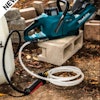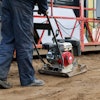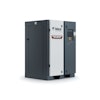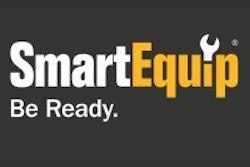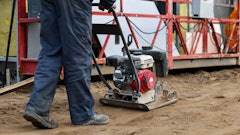
During the early 2000s, I participated in a study across national rental companies to analyze how much time on any given day a service technician spent servicing equipment. We tabulated the number of work orders being generated by technicians across a company’s locations, and the time logged for each repair. We correlated these numbers with the number of parts requests from company-internal stock, as well as the number of orders being placed from outside sources. To really understand the surrounding service workflow, we followed technicians around with clipboards and stopwatches to see what they were doing. Alex Schuessler, SmartEquip
Alex Schuessler, SmartEquip
The final results to us were shocking: On average, the amount of time these valuable and very capable employees spent performing service and repairs – or their “wrench time” – was less than 50%. How could this be? And what were they doing the rest of the time?
Well, a wide variety of things. Prior to working on the machine, they were locating the relevant service information to determine the repair that needed to be performed from manufacturers, dealers, and from their internal service departments. They consulted hundreds of books or CDs – either of which were often missing or outdated – or websites, which were organized differently for each equipment brand, all requiring hundreds of different user names and passwords.
After identifying parts, they checked whether they were in stock anywhere in the company, or whether they had to be ordered. If an order was required, technicians had to request permission and identify the right source, following both supplier rules for different equipment types – whether to order from a dealer or directly from the OEM – as well as company rules, as to when to utilize alternate suppliers.
Technicians also needed to know equipment service history and determine whether it was still under warranty, and what the warranty submission rules were, as they varied widely across suppliers. Alongside, they needed to judge how to prioritize a particular job over other repairs, depending on current customer demand for equipment.
By the time we were done understanding the extraneous demands of these service technicians, we marveled at the fact they could still find time in their day to perform actual repairs.
Service technicians are among a rental company’s most skilled and highly compensated employees, but they were required to spend a lot of their time performing laborious, low-skill tasks. The resulting cost pressure on company profitability was further worsened by an accompanying reduction in revenue: if a repair job took longer to complete, this meant equipment was unavailable for rental.
As we subsequently learned, these challenges for national rental companies proved to be even worse for smaller, “mid-market” companies with only a handful of locations, where service technicians wore many hats. For these companies, frequently there was no dedicated accounts payable department, and it was up to the service technician to reconcile differences in parts pricing between order and invoice. There was no dedicated training department, so they had to spend time bringing more junior employees up to speed. There were no dedicated IT teams, so parts master lists had to be loaded into rental management systems. And there was no formal specialization among employees responsible for “direct” spend (parts and equipment) on the one hand, versus “indirect” spend (consumables, stationary, retail items) on the other, so service technicians often ended up purchasing a lot of unrelated items, further cutting into valuable repair time.
Finally, the shortage of service and parts labor personnel is a global problem. In certain parts of the world, this trend is further worsened through structural labor market changes. Equipment rental companies in Singapore, for example, have traditionally benefitted from service labor from India, Malaysia, Indonesia, Thailand and other parts of Asia. As the Singaporean government has reduced the ability for companies to employ foreign labor, the rental market labor shortage has tightened more drastically, resulting in an even greater shortfall of service personnel.
Technology saves the day
While service labor markets tighten, technological innovation has provided powerful counter measures, resulting in dramatic efficiency gains: We may have a hard time hiring service technicians, but we also benefit from systems which make them more productive than ever before. The following is a sample of capabilities which have profoundly improved service efficiency over the past decade.
Automated delivery of service support: Integrating live electronic parts and service catalogs with rental management systems enable manufacturers to deliver service and parts information to the technician, intelligently customized to the serial number of the equipment they are servicing. The SmartEquip Network, for example, dynamically maps the individual rental company asset number to the make, model, and serial number of equipment, and then delivers the right, always-current service documentation onto the technician’s mobile device, saving hours of searching.
Automation of administrative workflow & transactions: Systems integrations further allow rental companies to automate the creation of workflow documentation. When technicians select their parts, the system accurately auto-populates work orders and purchase orders, which are then submitted electronically to the supplier, with zero labor effort.
Automation of back office administration: Smart e-commerce solutions update and enforce correct pricing for both buyers and sellers, therefore nearly eliminating the possibility of pricing mismatches. This dramatically reduces a company’s “accounts payable” burden for either service technicians or the back office, and by extension mitigates corresponding “accounts receivable” challenges for the suppliers.
Automation of service scheduling: The number of applications capable of providing “smart” scheduling of technicians by matching their specializations and capabilities against service priorities continues to become more sophisticated. Increasingly, they are being tied to transactional capabilities, where anticipated service needs will trigger the pre-emptive ordering of parts without requiring the intervention of the technician, resulting in optimized technician use.
Repair prediction: A new and very exciting development is the automated interpretation of equipment sensor data to drive the prediction of equipment failure. Not only are equipment sensors becoming ubiquitous, reporting in real time how a unit is faring, but the layering of statistical methods to predict machine failure is exceptionally promising. Companies like Trackunit and Uptake have partnered to connect sensor data with statistical inference (via “big data” and “machine learning”), to predict equipment performance and failure, thus saving hours in the service and repair process, and also in equipment downtime.
A recent return to our original study has shown that technology innovation to date for a typical rental company has reduced company-wide labor time associated with a repair by approximately 85%, of which more than 65% is in the form of pure service labor time. Even though technicians remain hard to come by, technology allows them to perform nearly three times as much work as they did 20 years ago by guiding their core work in real time and stripping away arduous extraneous tasks. This freed up wrench time is great for the company’s profitability and the technicians’ satisfaction, as it allows them to focus more exclusively on the type of work that attracted them to their job in the first place.
Alex Schuessler is a 20+ year technology and equipment industry veteran and founder of SmartEquip, a company which provides an industry-spanning, procurement and lifecycle management network across the equipment industry. Across North America, more than 85% of the locations associated with the Top-20 rental companies utilize this technology to manage their fleets, by driving service, parts management, and procurement across the supply chain. Schuessler presently leads the company’s international expansion, and the company’s pan-European customers include A-Plant in the UK, Boels Rental, and Riwal both headquartered in the Netherlands, and Zeppelin Rentals headquartered in Germany.


